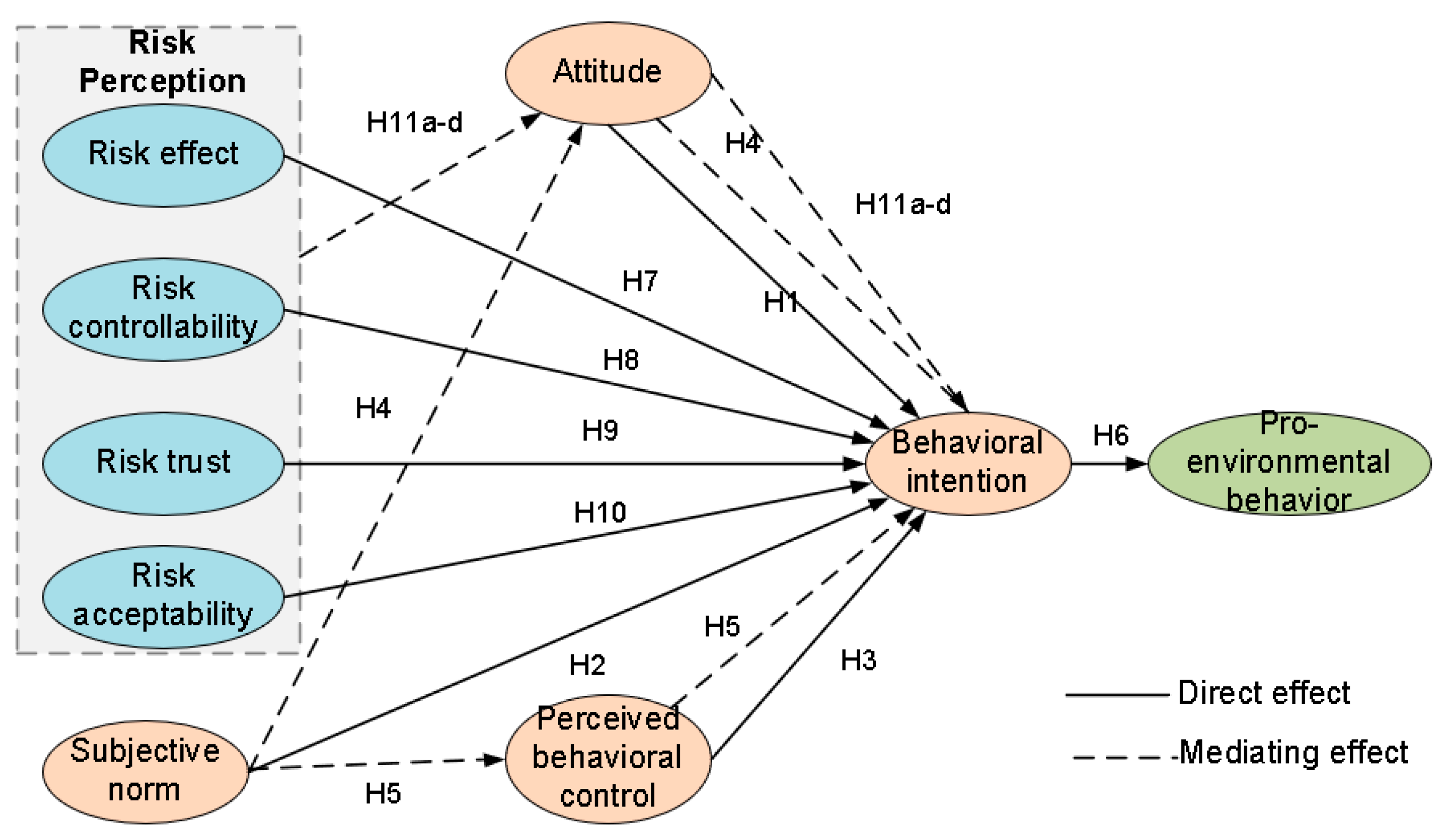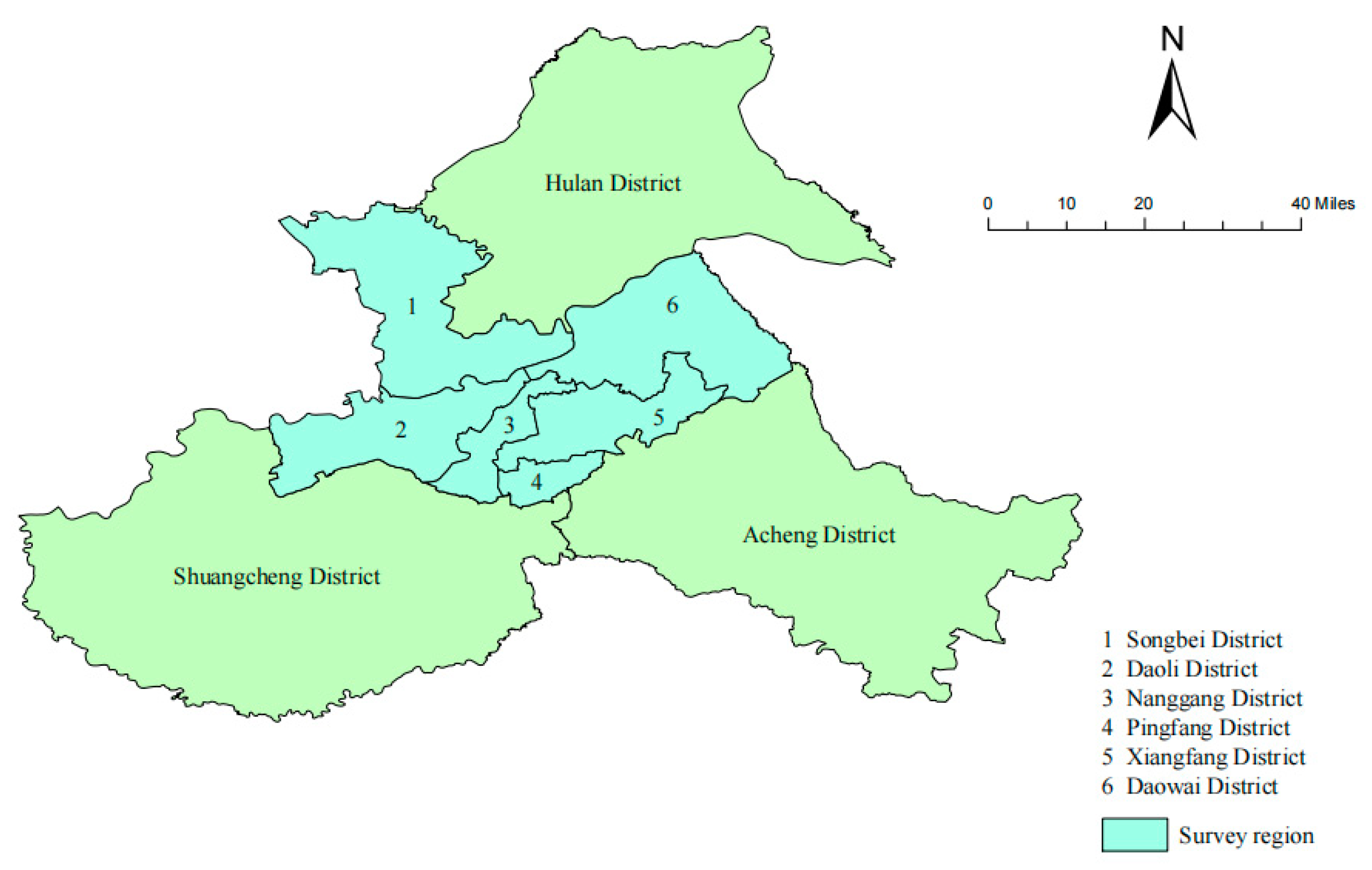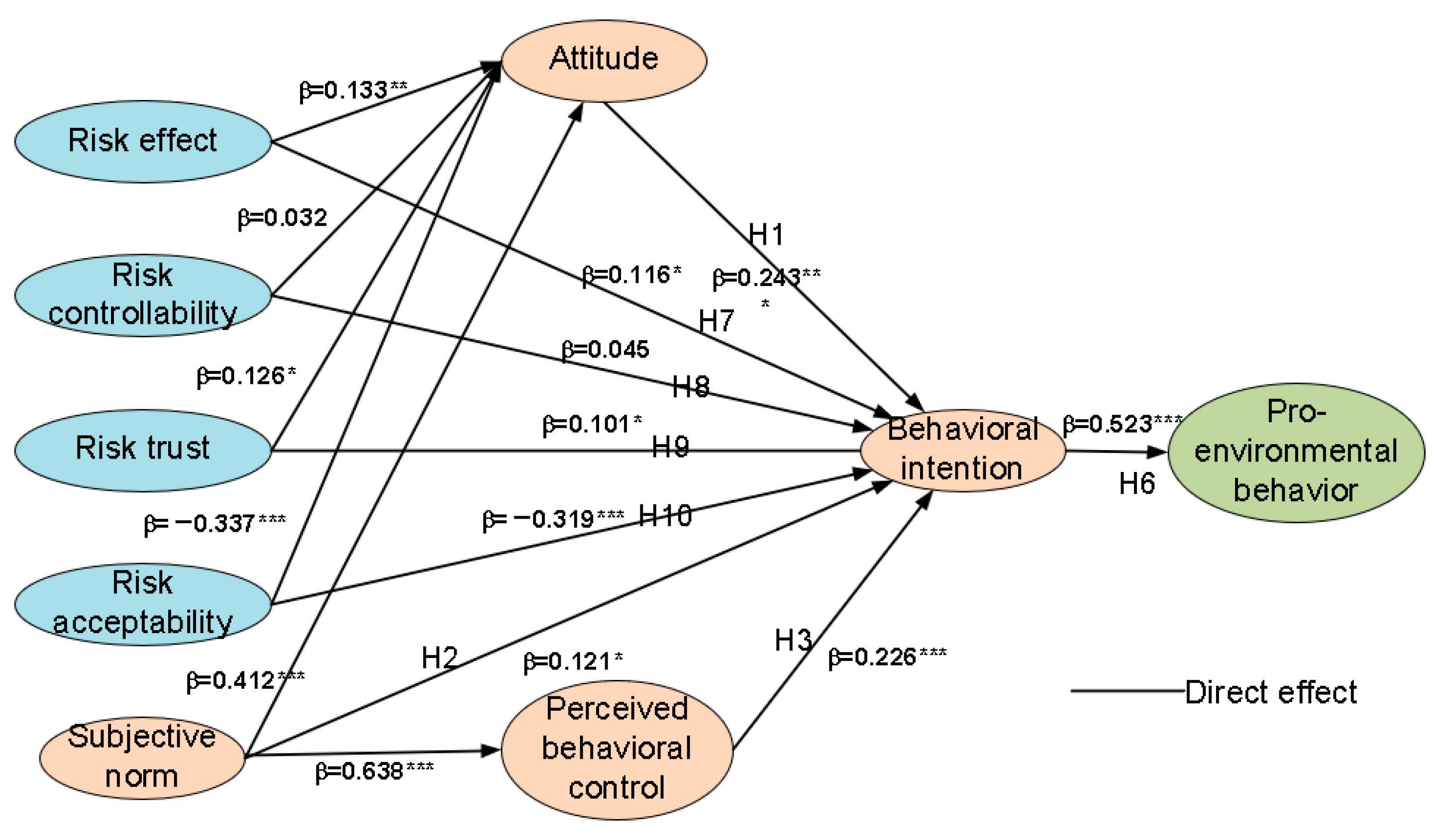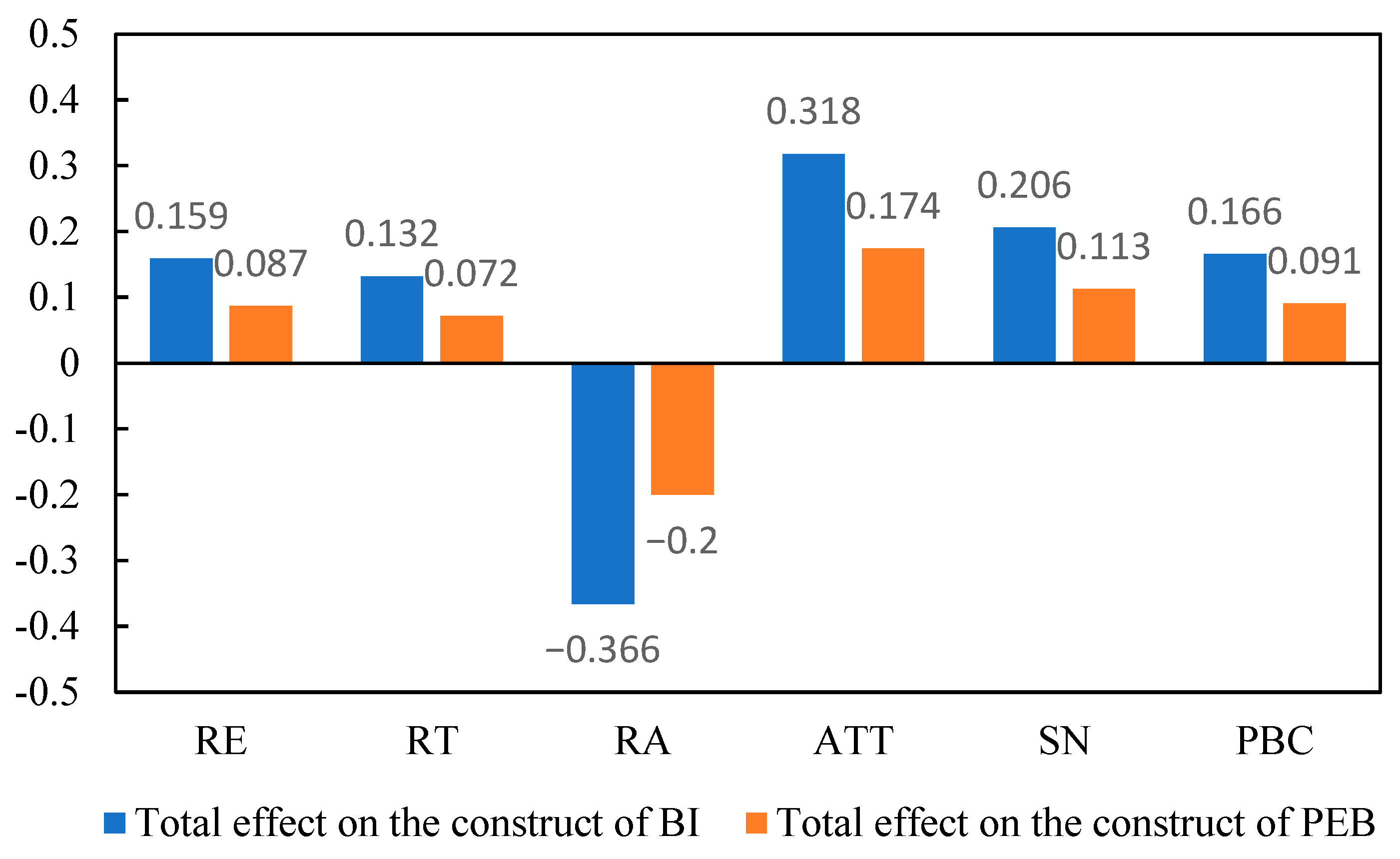1. Introduction
Air pollution is one of the most prominent concerns affecting the public’s daily life [
1]. According to a World Health Organization (WHO) report, air pollution is one of the greatest environmental risks to health [
2]. Previous research has demonstrated a strong association between air pollution and various diseases, including respiratory diseases [
3], cardiovascular diseases [
4], cancers [
5], and psychiatric diseases [
6]. In addition, air pollution not only damages agriculture [
7] and forestry and poses a significant threat to the sustainability of forest ecosystems [
8] but also affects the sustainable development of local tourism and hinders economic development [
9]. All the aforementioned points suggest that air pollution poses a significant threat to sustainable development, making it imperative to improve air quality.
The Chinese government has implemented several strategies to address air pollution. For example, the “Three-year Plan on Defending the Blue Sky” was issued by the State Council of China [
10]. While these efforts have improved air quality, the situation remains unsatisfactory. Heavily polluted weather during the fall and winter continues to affect the Beijing–Tianjin–Hebei region and its surrounding areas, with more than half of China’s cities still experiencing severe pollution [
11]. Traditional top–down planning is insufficient for fully resolving air pollution issues. A diversified governance approach incorporating bottom–up initiatives is needed to address the air pollution problem [
12]. The diversified governance approach emphasizes the involvement of non-state actors; enterprises, the government, and the public need to collaborate to control air pollution [
13]. Thus, as a member of the public, it is imperative that consumers be encouraged to adopt pro-environmental behaviors to enhance air quality. Pro-environmental behaviors are sustainable practices by consumers for achieving environmental sustainability, such as purchasing green products and conserving energy.
Despite the importance of such behaviors, many shortcomings remain in fostering a strong public sense of pro-environmental behavior in China [
14]. An insufficient understanding of pro-environmental behaviors influences the appropriate implementation of regulations to control air pollution and the achievement of the Sustainable Development Goal (SDG) [
14,
15]. Therefore, identifying the factors that affect consumers’ pro-environmental behaviors is crucial. The theory of planned behavior (TPB) as a psychological model is widely used in pro-environmental behavior research. It is often applied to study individuals’ decision-making processes regarding pro-environmental and sustainable behaviors, e.g., energy conservation and reducing private road transportation [
16,
17]. However, there are concerns regarding the validity of the TPB model since it is unable to adequately describe and forecast individual actions on its own [
18,
19]. Additional psychological factors have been integrated into the TPB model to optimize it and to enhance its explanatory power [
20,
21].
Risk perception, as a psychological factor that explains the motivation of individual behaviors, has been widely accepted and applied [
22,
23]. Risk perception has been incorporated into the TPB model to increase its explanatory power. Rezaei et al. [
24] integrated a single dimension of risk perception into the TPB to examine Iranian farmers’ intentions to utilize fertilizers safely, resulting in an 11.2% increase in the explanatory power of the model. However, they failed to differentiate the multidimensional attributes of risk perception and were thus unable to uncover the heterogeneous effects of different risk perception dimensions on behavior. The impacts of multidimensional risk perception on pro-environmental behavior are rarely examined in the current literature, despite the fact that risk perception is multidimensional and that examining the relationship between risk perception and pro-environmental behavior from a multidimensional risk perception perspective will be more thorough and in-depth. In addition, most studies based on the theory of planned behavior (TPB) focus only on the prediction of behavioral intention and lack empirical testing of the relationship between behavioral intention and actual behavior (pro-environmental behavior) [
25].
To address these research gaps, this study aims to explore the mechanisms of how multidimensional risk perception variables influence consumers’ pro-environmental behaviors and the relationship between behavioral intention and pro-environmental behavior. Another objective is to examine the applicability of the extended TPB model to the study of pro-environmental behavior. To achieve the above objectives, this study introduces four dimensions of risk perception, namely risk effect, risk controllability, risk trust, and risk acceptability. This study subsequently incorporates multidimensional risk perception variables into the TPB model, extending the model to explore the link between consumers’ risk perception regarding air pollution and pro-environmental behavior. A structural equation model (SEM) is applied to analyze the data.
This study offers a dual contribution. First, compared with Rezaei et al.’s [
24] unidimensional risk integration, this study constructs a new theoretical framework containing four dimensions of risk perception (risk effect, risk controllability, risk trust, and risk acceptability) and validates the different effects of multidimensional risk perception on consumers’ pro-environmental behavior through structural equation modeling, expanding the application of the TPB in pro-environmental behavior research. In addition, it confirms the existence of a gap between behavioral intention and pro-environmental behavior and that behavioral intention can be converted into pro-environmental behavior to a certain extent. Second, it provides valuable insights to the government for raising consumers’ awareness of environmental protection and enhancing consumers’ pro-environmental behaviors to improve air quality and to achieve the goal of sustainable development from the perspective of consumers’ risk perception of air pollution.
The remainder of the paper is structured as follows:
Section 2 reviews the relevant theoretical foundations and presents the hypotheses based on the existing literature.
Section 3 details the research methodology.
Section 4 presents the empirical results.
Section 5 discusses the theoretical and policy implications of the findings.
Section 5 also compares the results with previous studies. Finally,
Section 6 summarizes the study, highlights its limitations, and suggests directions for future research.
5. Discussion
Since air pollution impedes societies’ ability to develop sustainably, it has drawn more attention in recent years. Studies on consumers’ pro-environmental behavior from consumers’ risk perception are rare, despite the government’s calls for customers to reduce air pollution through everyday sustainable and pro-environmental consumer behaviors. This study introduces four dimensions of risk perception, including risk effect, risk controllability, risk trust, and risk acceptability. It then integrates multidimensional risk perception variables into the TPB model to construct an extended TPB model, aiming to explore the influence mechanism of consumers’ risk perception of air quality on consumers’ pro-environmental behavior. This paper also aims to explore the applicability of the extended TPB model to the study of pro-environmental behavior and the relationship between behavioral intention and pro-environmental behavior. Moreover, it provides suggestions for the government to enhance consumers’ pro-environmental behavior, thereby mitigating air pollution and helping to achieve the goal of sustainable development.
This study indicates that risk controllability does not affect consumers’ behavioral intention or pro-environmental behavior, which is in line with the findings of Mao et al. [
44], who reported that the risk controllability of air pollution had no significant effect on the public WTP for enhancing air quality. This result differs from the classical risk perception theory of Fischhoff and Slovic et al. [
46], where controllability usually positively affects intentions by enhancing individuals’ sense of control over behavior. However, the results of this study may be related to the cultural context specific to China. For example, fatalism is more prevalent in East Asian cultures [
61], and consumers may tend to accept the status quo rather than take action when they perceive the risk of air pollution as uncontrollable. This psychological mechanism weakens the role of risk controllability in driving behavioral intention. Moreover, the Chinese public’s long-term reliance on the government-led model of environmental pollution control [
62] may further reduce individuals’ perceptions of their own control.
The results indicate that risk acceptability significantly and negatively affects consumers’ behavioral intentions and significantly and negatively indirectly affects pro-environmental behavior through behavioral intention. This is in line with the findings of Mao et al. [
44]. This is because the average acceptance of poor air quality by consumers is low, and consumers with a low acceptance of poor air quality will have more anxiety about exposure to polluted air, as they worry that polluted air will affect their health. For the sake of their health, consumers will take action to improve air quality. Therefore, the government can enhance consumers’ pro-environmental behavior by educating consumers on the health risks, economic losses, and traffic risks caused by air pollution in various ways to influence consumers’ risk acceptability. For example, the official government account produces a series of sketches or animated shorts on short video platforms (Douyin, Kwai) to explain the possible health risks associated with air pollution, economic losses, and transportation risks caused by air pollution against the backdrop of the local air pollution problem.
The results show that risk effect significantly and positively affects consumers’ behavioral intentions and significantly and positively indirectly affects pro-environmental behavior through behavioral intention, which is consistent with the findings of J. Yang et al. [
45]. Longer duration and greater risk impacts stimulate consumers’ awareness of self-protection and their intentions to improve air quality and avoid threats to their lives and safety. However, the government should not encourage consumers’ pro-environmental behavior by increasing the risk effect of air pollution. Instead, the government can allow schools to offer practical courses on environmental protection to teach students how to reduce the negative impacts of air pollution through personal pro-environmental behaviors (e.g., using public transportation, purchasing environmentally friendly products). Additionally, it can ask community councils to put up posters on community bulletin boards to publicize how to reduce air pollution through pro-environmental behaviors. By implementing these initiatives, the government can improve air quality and, hence, reduce the risk effects of air pollution.
This study indicates that risk trust significantly and positively affects consumers’ behavioral intentions and significantly and positively indirectly affects pro-environmental behavior through behavioral intention, which is in line with the findings of Nguyen et al. [
50]. Furthermore, trust in the government also affects consumers’ behavioral intentions. Nguyen et al. [
50] revealed that the greater the consumers’ level of trust in the government is, the greater the likelihood that consumers will take action in the face of air pollution. Therefore, to eliminate consumers’ information asymmetry and misunderstandings about the government and to strengthen consumers’ trust in the government, the government can set up a real-time data platform for air pollution control to publicize the monitoring data of pollutant sources (e.g., emissions from enterprises) and the progress of treatment (e.g., the rate of achievement of emission reduction targets). The government can regularly organize government–citizen dialogues where the head of the environmental protection department answers questions from the public (e.g., how to deal with industrial pollution) to increase public trust in government actions.
The findings of this study demonstrate the applicability of the extended TPB model to the study of pro-environmental behavior, which aligns with the findings of previous research [
63,
64]. This paper indicates that attitudes significantly and positively affect consumers’ behavioral intentions, consistent with the findings of Sánchez-García et al. [
64] and Savari and Gharechaee [
31]. The government can change consumer attitudes toward the improvement of air quality by designing a multi-level incentive mechanism. At the individual level, the government can implement a ”green points system”, whereby citizens accumulate points through low-carbon behaviors (e.g., using public transportation) and redeem them for discounts on public services (e.g., a 5% reduction in metro fares). At the corporate level, the government can offer tax breaks (e.g., a 10% reduction in corporate income tax) to corporations with “green certifications” and prioritize their products in government procurement. At the community level, the government can set up a network of environmental volunteers. In addition, honorary awards should be presented to outstanding environmental volunteer champions. Moreover, this study confirms that the multidimensional variables of risk perception, including risk effect, risk trust, and risk acceptability, significantly and indirectly affect pro-environmental behavior through the chain-mediating effect of attitude and behavioral intention. The rationality of risk perception as an antecedent variable for TPB variables has been justified in prior studies [
30,
41,
65] and is demonstrated again in this study.
The results indicate that subjective norms significantly and positively affect consumers’ behavioral intentions, which is consistent with the findings of Rezaei et al. [
24], Lou et al. [
63], and Sung-Un Park et al. [
66]. An individual’s social group tends to shape his or her thoughts, and the more pressure individuals feel from their social group, the stronger their behavioral intention will be. Especially in China, trust is valued in interpersonal interactions, and people are more willing to follow the advice of their relatives and friends [
63]. Hence, subjective norms significantly and positively affect consumers’ behavioral intentions. In this case, the official media can launch “environmental role model” contests on social media (e.g., “Low-Carbon Family of the Year”), and expand their influence through social networks of acquaintances (WeChat) and use social pressure to drive behavioral change.
The results indicate that perceived behavioral control significantly and positively affects consumers’ behavioral intentions because people are more willing to engage in actions that they feel capable of performing. The behavioral intention of these individuals is higher when they have confidence in their time, resources, and skills, as they believe that these factors enable them to take effective actions. This finding is in line with the findings of Rezaei et al. [
24], Savari and Gharechaee [
31], and Cao et al. [
32]. Therefore, the government can compile a guide on pro-environmental behavior for consumers to guide them in performing pro-environmental behaviors to improve air quality. Moreover, subjective norms have a significant indirect positive effect on consumers’ behavioral intention through attitudes and perceived behavioral control. Specifically, attitudes and perceived behavioral control may serve as mediators that influence the relationship between subjective norms and consumers’ behavioral intentions, and this result is consistent with the findings of Sánchez-García et al. [
64].
This study indicates that consumers’ behavioral intentions significantly and positively affect pro-environmental behaviors, and that the SEM explains 86% of the variance in behavioral intention (R
2 = 0.86) and 27% of the variance in pro-environmental behavior (R
2 = 0.27). In this study, the explanatory power of the SEM for pro-environmental behavior was 27% (R
2 = 0.27). This result falls within the reasonable range within the field of behavioral sciences, particularly in research grounded in the theory of planned behavior. For instance, in Savari and Gharechaee’s [
31] study on farmers’ safe fertilizer-use behavior, the R² for pro-environmental behavior was 0.31. Similarly, Sánchez-García et al. [
64] reported an R
2 of 0.28 in their research on the willingness to pay to reduce air pollution. Hence, consumers’ behavioral intention is the most critical and direct factor affecting pro-environmental behavior, which is in line with the findings of previous studies [
63,
67,
68]. Furthermore, the results also suggest that behavioral intention is not equivalent to pro-environmental behavior and that behavioral intention can, to a certain extent, be converted into pro-environmental behavior to a certain extent. This is because the generation of behaviors depends not only on behavioral intention but also on other factors influencing pro-environmental behavior. Although the model explains some of the variance in pro-environmental behavior, 73% of the variance is still unexplained, suggesting the presence of other potential influences, such as policy incentives and economic factors. Nigam et al.’s [
69] study proved that government policy is a key factor influencing consumers’ use of new energy vehicles. The study by Bahrami et al. [
70] demonstrated that despite consumers’ claims that they were willing to pay a premium for green products, actual purchase data showed that price was still a more important decision-making factor than environmental attributes. Due to the complexity of human behavior, it is challenging for a single theoretical model to comprehensively account for all influencing factors. In future research, scholars can further optimize the model by incorporating the aforementioned variables to enhance the explanatory power for pro-environmental behavior.









